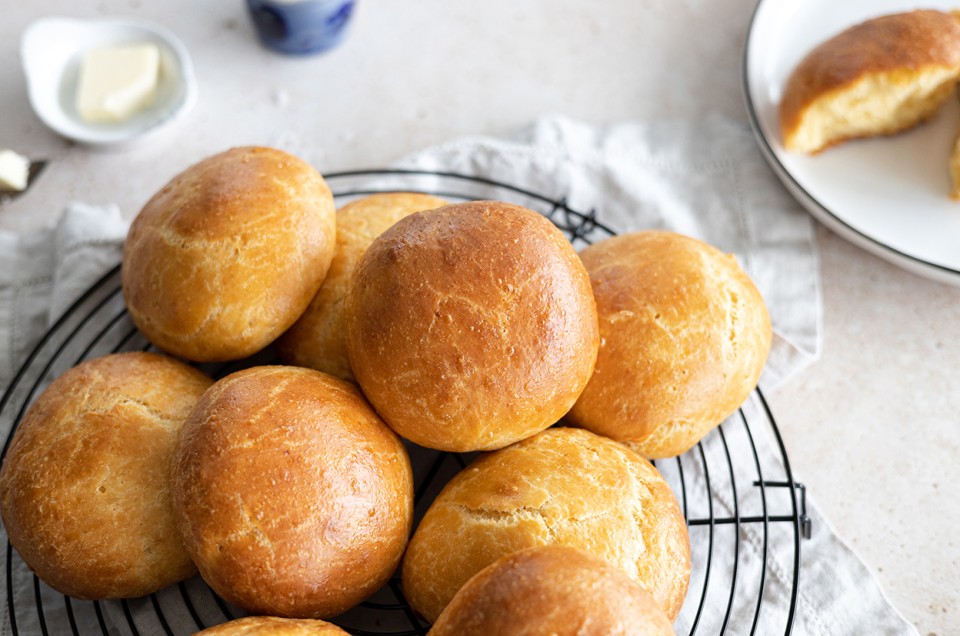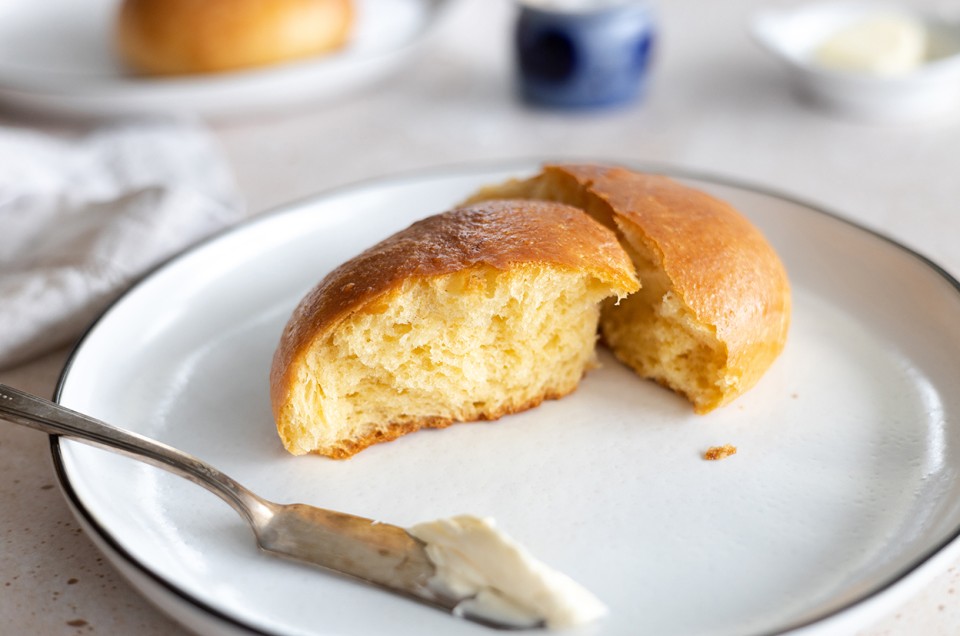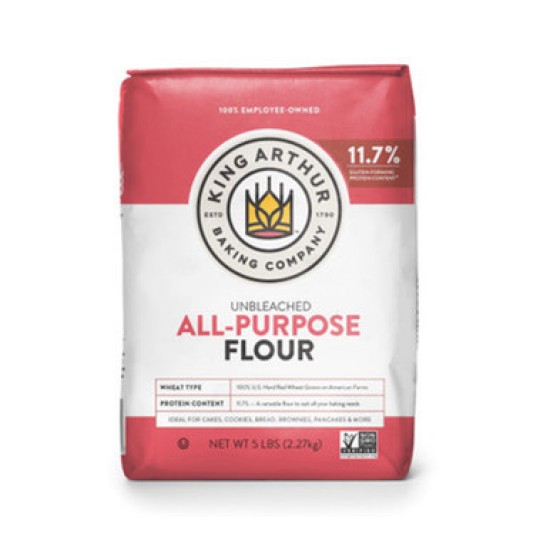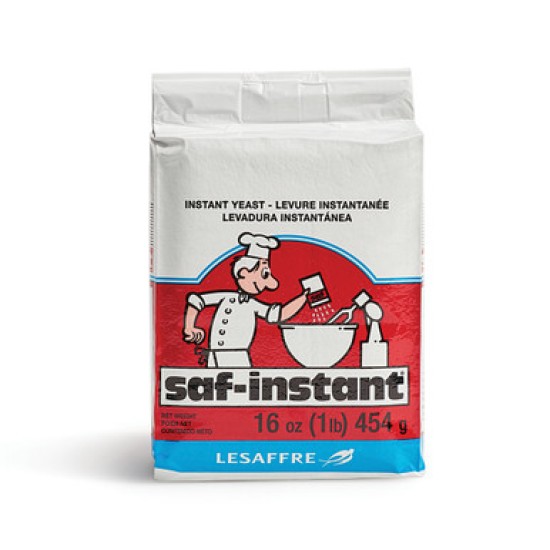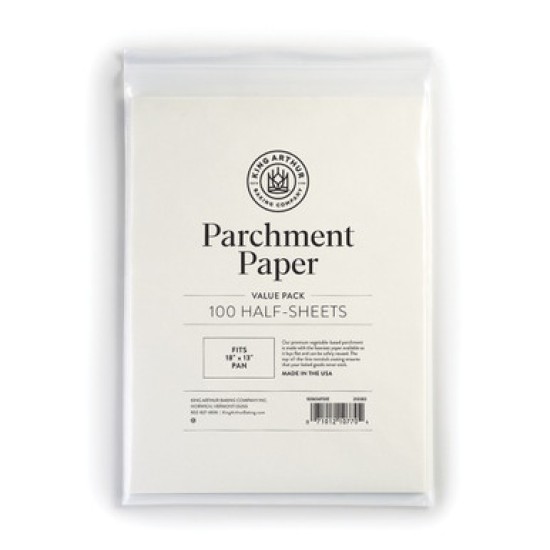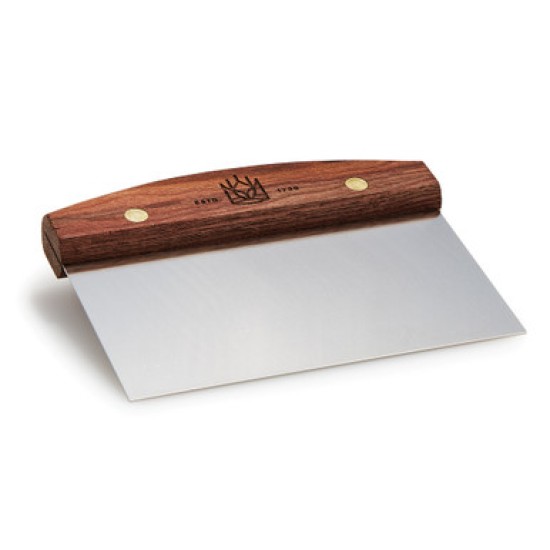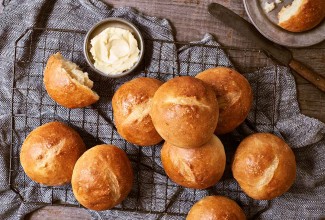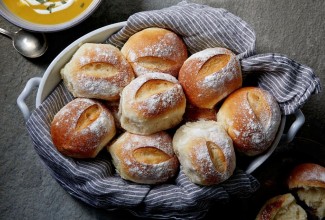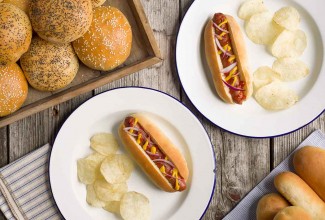-
To make the dough: Cut the cheese into chunks. Weigh your flour; or measure it by gently spooning it into a cup, then sweeping off any excess. Place the flour and cheese into the work bowl of a food processor. Process until the cheese is finely ground, and no chunks remain.
-
Combine the flour/cheese with the remainder of the dough ingredients, mixing to make a rough, sticky dough. Knead the dough — in a mixer or bread machine — until it's smooth and starting to become shiny. It can take up to 20 minutes of kneading in a stand mixer to develop (see "tips," below), so we don't recommend kneading this by hand.
-
Form the dough into a ball, place it in a greased bowl, cover, and let it rise for 1 hour.
-
Refrigerate the covered dough overnight, to make it easier to shape.
-
The next day, remove the dough from the refrigerator about an hour before you want to shape the buns and divide it into 10 pieces (about 85g each).
-
Divide the dough into 10 equal pieces; each will be about 85g.
-
Shape each piece into a ball; working with the chilled dough is exactly like working with clay or Play-Doh, so it's easy to shape. Position the balls on a parchment-lined baking sheet, leaving space between them. Using the bottom of a measuring cup or other flat surface, flatten the balls to about 3 1/2" diameter.
-
Cover the buns, and let them rise until they're quite puffy. This may take up to 3 to 4 hours, depending on how warm your rising environment, and how cold the dough.
-
Towards the end of the rising time, preheat the oven to 350°F.
-
To make the egg wash: Whisk together the egg white and water until foamy. Brush the buns with the egg wash.
-
Bake the buns for 20 minutes; tent loosely with aluminum foil. Bake for an additional 7 to 10 minutes, until the buns are golden brown, and a digital thermometer inserted into the center of one reads about 190°F.
-
Remove the buns from the oven, and cool them on a rack.
-
Storage information: Store leftover buns, well-wrapped, at room temperature for several days; freeze for longer storage.
